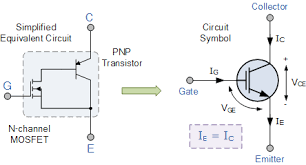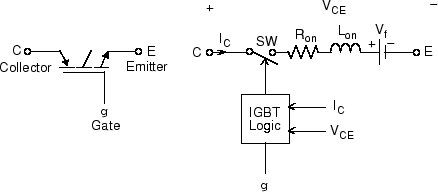It's not a MOSFET, it is an IGBT, so doesn't have an Ron resistance in the way a MOSFET does.
An IGBT functions like a combined device with a low power MOSFET driving a bipolar transistor. Because the operating current density for bipolar transistors is higher than FETs an IGBT can carry higher currents than the same size FET.

The data sheet gives the voltage drop at specific currents and has a curve in figure 5 on page 8 that could be used to determine the voltage drop at various currents. Notice that it does not intersect at zero as a MOSFET would and requires about 0.5v to start conducting.

The Simulink model treats the IGBT DC output characteristic as having two segments:
Vf - The voltage at which conduction starts
Ron - The slope of the conduction after that point

From the curve the Vf is 0.5V.
To calculate Ron draw a straight line through the curve from 0.5v to 2.5v. The current increases by ~140Amps over this 2V range. This is equivalent to a resistance of 2/140 = ~14mOhm (0.014 Ohms).



